|
Spring is a time of blooming flowers and
insect life. This is a great opportunity for the microscopist,
many biological specimens are waiting to be examined. Here, we
have the stamen of a large white Agave flower, ready to pollinate.
Also inside the flower much to my surprise were the nearly microscopic
Thrips. These are small pest insects which are some of the smallest
insects on the planet. These were examined as well.
Click
all images for the larger and more detailed view:
Stereo
Microscope images:
 |
Agave
stamen, the male part of the flower. on the right the yellow
tip is where the pollen is produced. The white stalk of the stamen
has a surprise for insects trying to climb it and get a pollen
meal... |
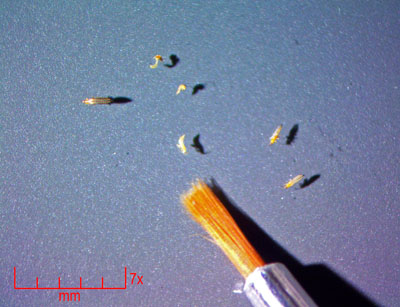 |
Also
viewed here at 7x are some of the thrips that were in the flower
I scooped out with a small paintbrush. They are around 1mm long. |
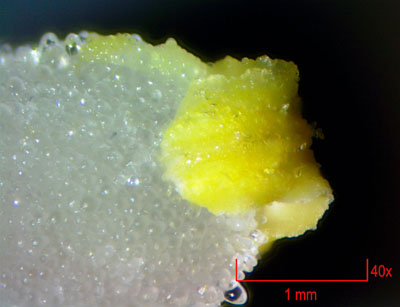 |
Close
up at 40x, the maximum with the stereo microscope. This is the
pollen producing part of the tip of the stamen. Something very
peculiar however is starting to become evident in the white stalk... |
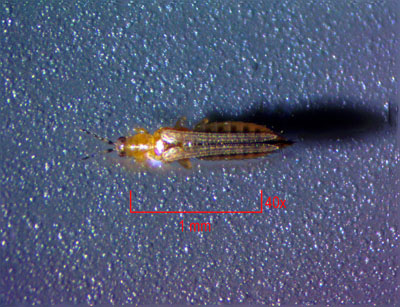 |
Close
up at 40x of the thrip. Note the very narrow wings and tiny black
eyes. |
High Power views
with the Trinocular Microscope
 |
An
alien landscape. The edge of the white stalk on the stamen is
covered with insect trapping threads. This prevents the insect
from making it to the top. |
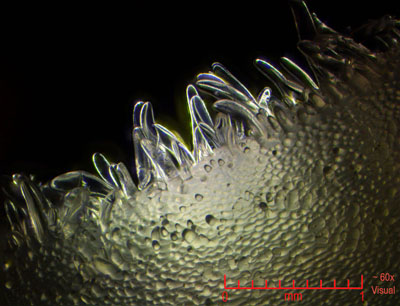 |
Same
magnification, but with the dark field illumination. This is
exactly what this method is used for, to increase detail and
contrast on transparent specimens! |
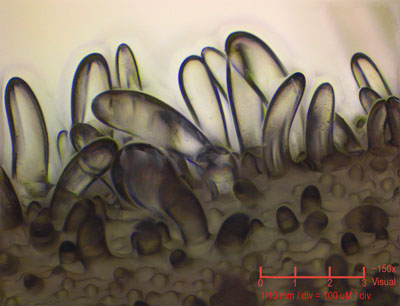 |
At
150x, the landscape becomes surreal. These insect trapping gelatinous
fingers are all over the stalks. |
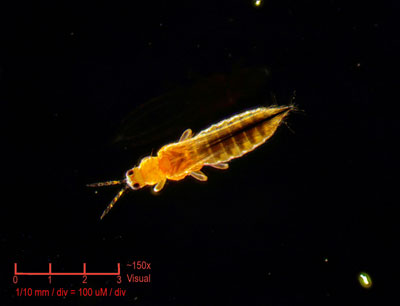 |
With
dark field illumination at 60x, (not 150) the thrip is a golden
yellow with fine hairs on its body. |
 |
150x
view shows the facets on the eyes and fine details in the antennae.
Singly, thrips can do very little by them selves, but by the
billions, crops are destroyed. |
 |
600x
view of the head region. The eyes have about 60 facets on the
entire hemispheres. Such low "pixilated" resolution
is sufficient for all of lifes functions. Robotics engineers
take note! |
|
Camera: 10 Megapixel CMOS Platform: AmScope Trinocular 2000x & Stereo Filters: NONE Location: Payson, Az Processing: Photoshop CS Pro HOME